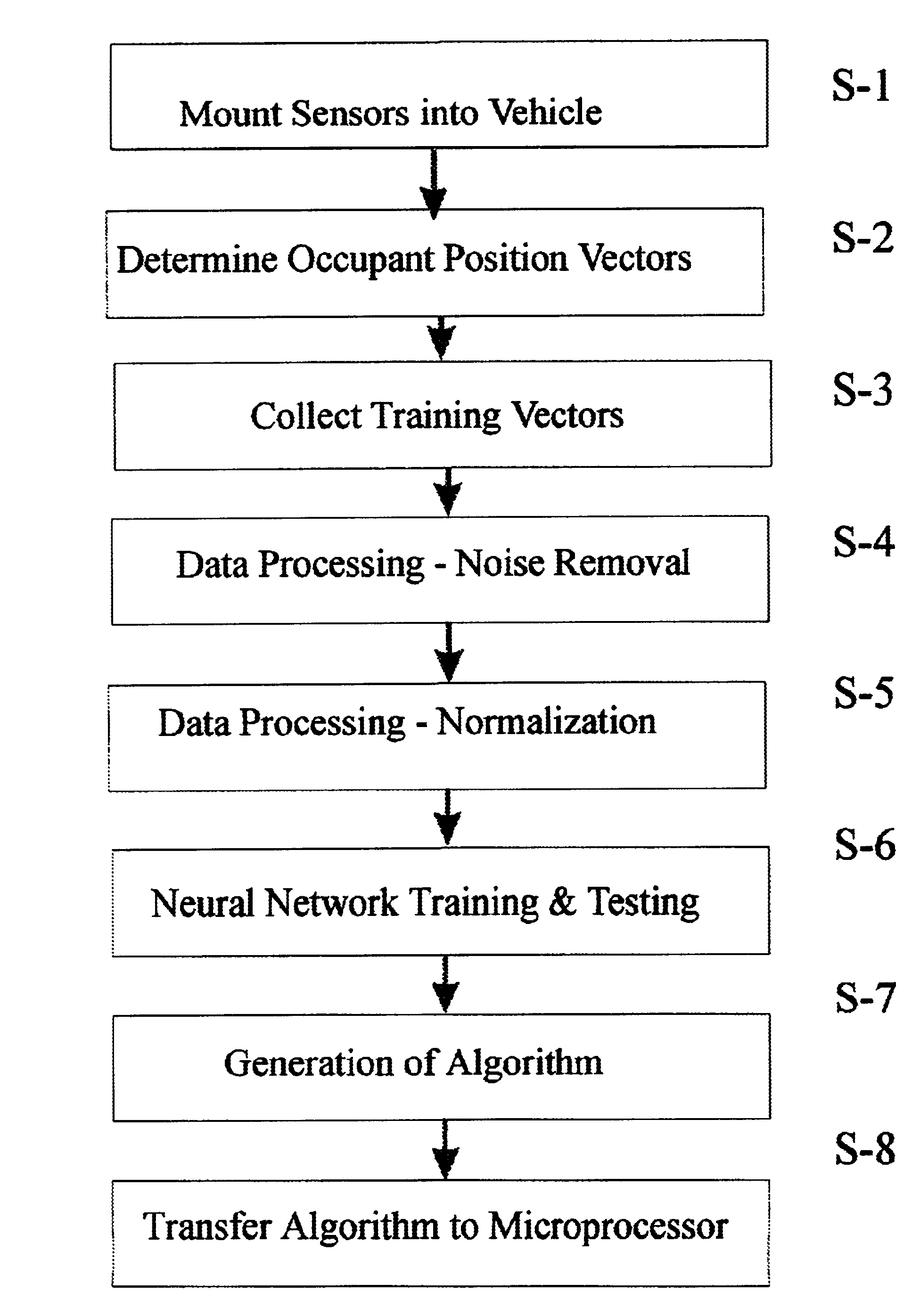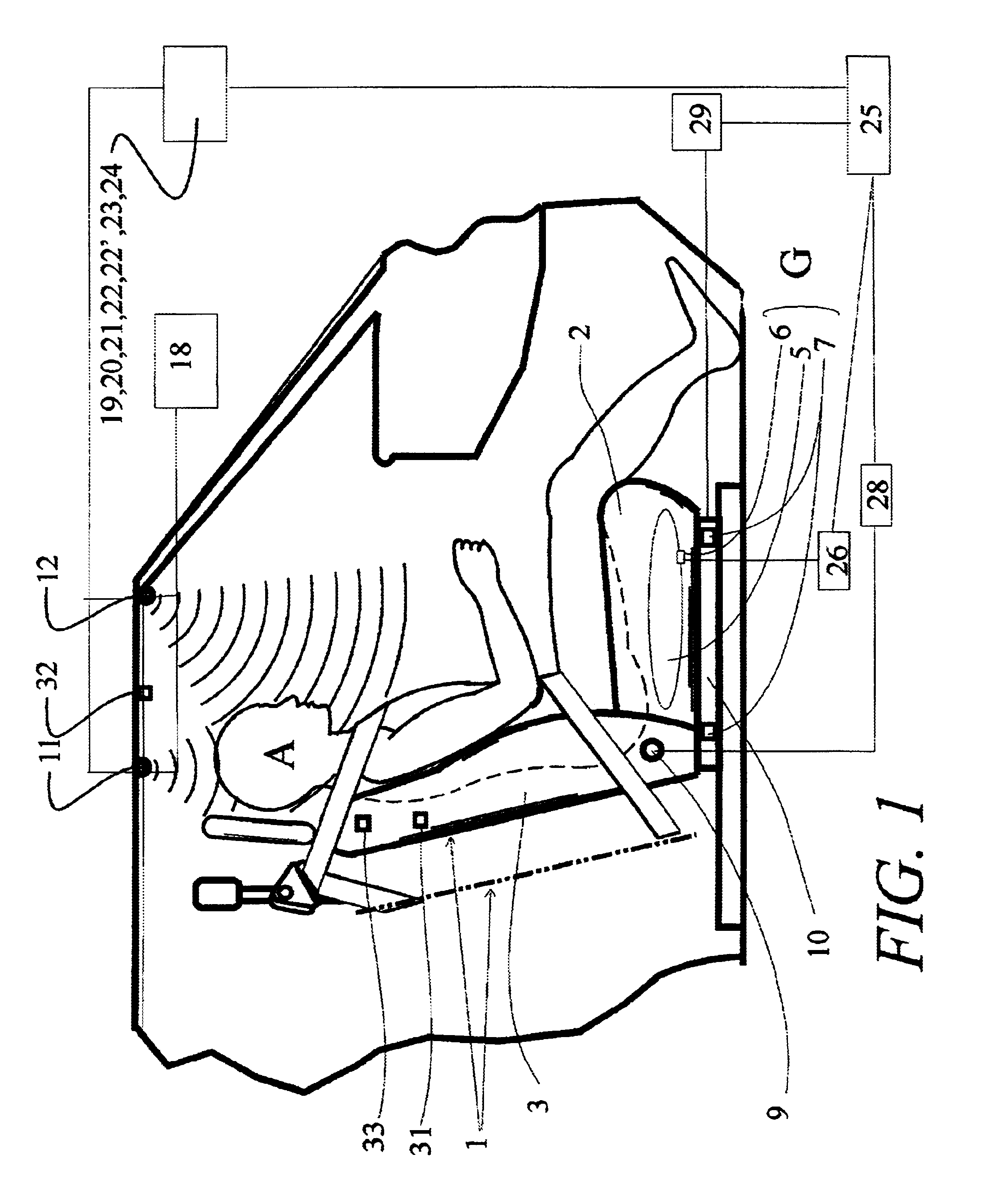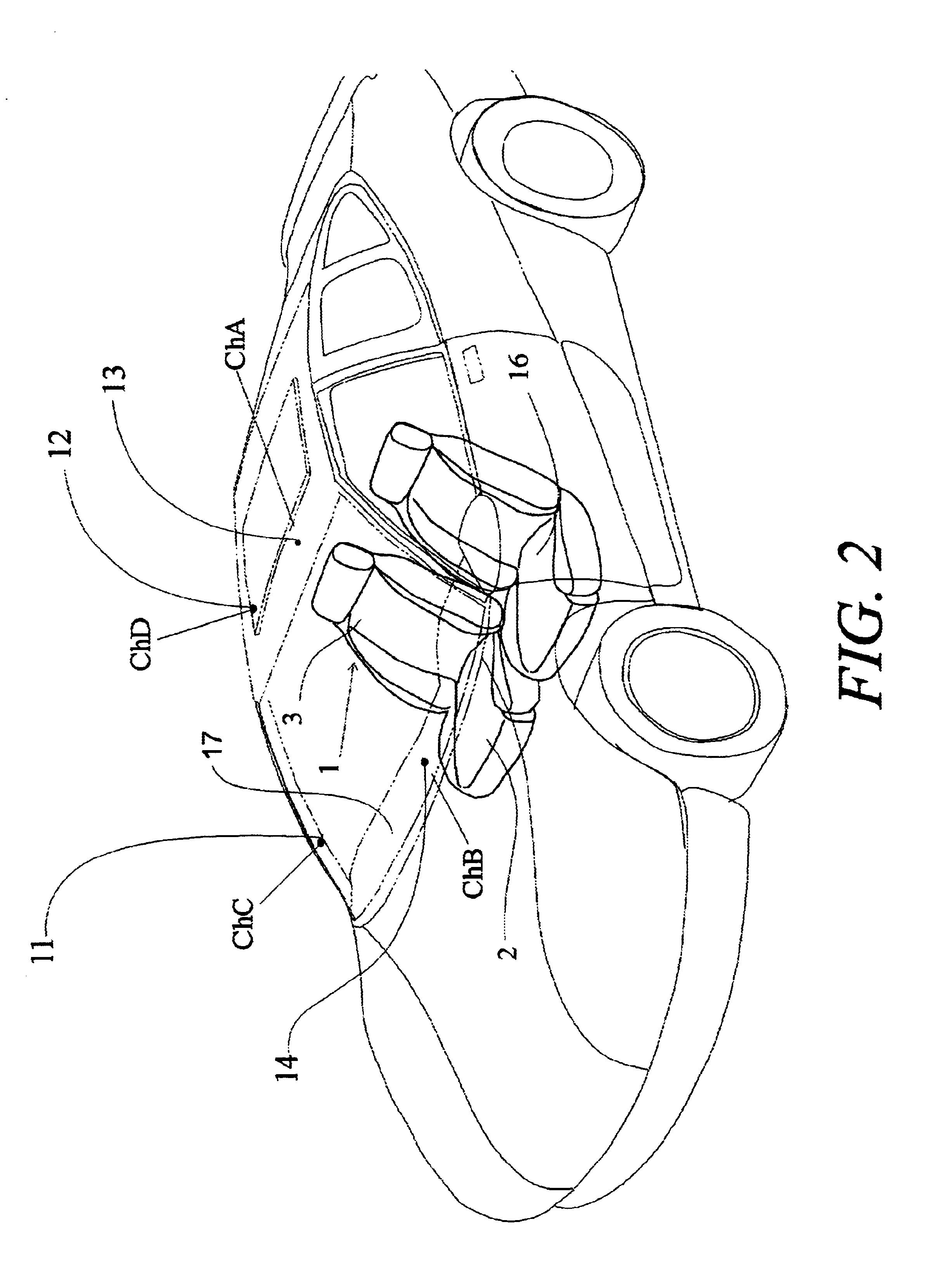Apparatus and method for measuring weight of an occupying item of a seat
a technology for occupying items and measuring equipment, which is applied in the direction of vehicle seats, weighing equipment for materials with special properties/forms, electric devices, etc., can solve the problems of occupants being seriously injured or killed by airbag deployment, children sitting in such seats being seriously injured or killed, etc., to improve the performance of airbags and reduce occupant injuries
- Summary
- Abstract
- Description
- Claims
- Application Information
AI Technical Summary
Benefits of technology
Problems solved by technology
Method used
Image
Examples
Embodiment Construction
[0118]Referring to the accompanying drawings wherein like reference numbers designate the same or similar elements, FIG. 1 shows a passenger seat 1 to which an adjustment apparatus including a seated-state detecting unit according to the present invention may be applied. The seat 1 includes a horizontally situated bottom seat portion 2 and a vertically oriented back portion 3. The seat portion 2 is provided with one or more weight sensors 6 and 7 that determine the weight of the object occupying the seat. The coupled portion between the seated portion 2 and the back portion 3 is provided with a reclining angle detecting sensor 9, which detects the tilted angle of the back portion 3 relative to the seat portion 2. The seat portion 2 is provided with a seat track position-detecting sensor 10. The seat track position detecting sensor 10 fulfills a role of detecting the quantity of movement of the seat 1 which is moved from a back reference position, indicated by the dotted chain line. ...
PUM
 Login to View More
Login to View More Abstract
Description
Claims
Application Information
 Login to View More
Login to View More - R&D
- Intellectual Property
- Life Sciences
- Materials
- Tech Scout
- Unparalleled Data Quality
- Higher Quality Content
- 60% Fewer Hallucinations
Browse by: Latest US Patents, China's latest patents, Technical Efficacy Thesaurus, Application Domain, Technology Topic, Popular Technical Reports.
© 2025 PatSnap. All rights reserved.Legal|Privacy policy|Modern Slavery Act Transparency Statement|Sitemap|About US| Contact US: help@patsnap.com



